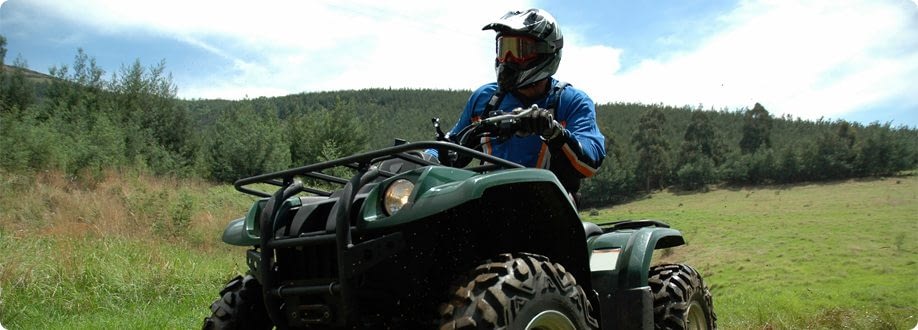

 “Hop on! I’ll take you there.”
“Hop on! I’ll take you there.”
Whether it is crossing a ravine, climbing a hill, or traveling down a gravel road, the ATV may be the fastest way to get to a broken fence, stray livestock, or anything else that needs attention on the farm and in the field. Many farmers take the speed and convenience of ATVs for granted.
“Riders don’t give ATVs the respect they deserve,” said Glenda Blumer, a farm claims manager at Grinnell Mutual. “It’s second nature to them to get on and do what needs to be done when, in fact, they need to think about the consequences.”
Children account for over a third of ATV-related injuries, according to reports from the Childhood Ag Safety Network. Young, inexperienced riders are at risk of injuries or death because ATVs have high centers of gravity and can weigh 800 pounds. Parents can help prevent a tragedy by modeling good riding, talking about riding readiness, and education.
“There are two common reasons for child-ATV injuries,” said Marsha Salzwedel, Agricultural Youth Safety Specialist at the National Children’s Center for Rural and Agricultural Health. “First, the size of rider for the size of machine needs to be considered. No one under age 16 should be on a full size ATV.
“Second, passengers should only be allowed on ATVs that are designed to carry passengers and most are not. Even ATVs designed for passengers are not designed for small children, so ‘giving rides’ on ATVs to small children is a very dangerous practice.”
Model good riding
Children learn from the actions and behaviors of their parents—both good and bad.
“Modeling behavior is easier said than done for farmers because of routines,” said Blumer. “The farmer hops on and goes to chase a cow that got out.”
Wearing a helmet and using manufacturer-installed safety equipment such as seat belts are two ways older riders can lead by example and demonstrate the respect ATVs require.
One way parents and teens can discuss ATV safety is to cover the Readiness Checklist from the ATV Safety Institute, which offers a series of question for parents and children based on physical and mental development as well as decision-making skills.
If you want a teen to perform work on your farm, the North American Guidelines for Children’s Agricultural Tasks has a set of guidelines and questions for you to use to evaluate your child’s abilities. Cultivate Safety has information for hired teen workers. TheATV Safety Institute also offers riding courses.
For more information
For more tips on how to help prepare teens for success on ATVs, visit the ATV Safety Institute. For more information on how you can prevent accidents on your farm, visit Farm Talk on the Front Porch on grinnellmutual.com.
Filed Under: Blog, Recreational Vehicle Insurance | Tagged With: ATV, insurance, summer fun

